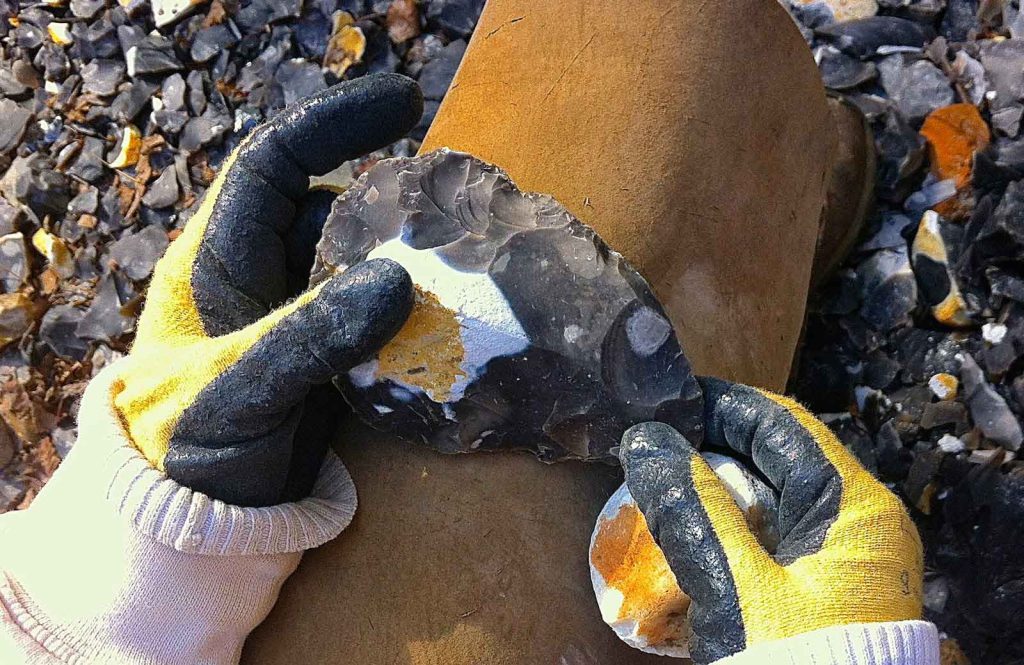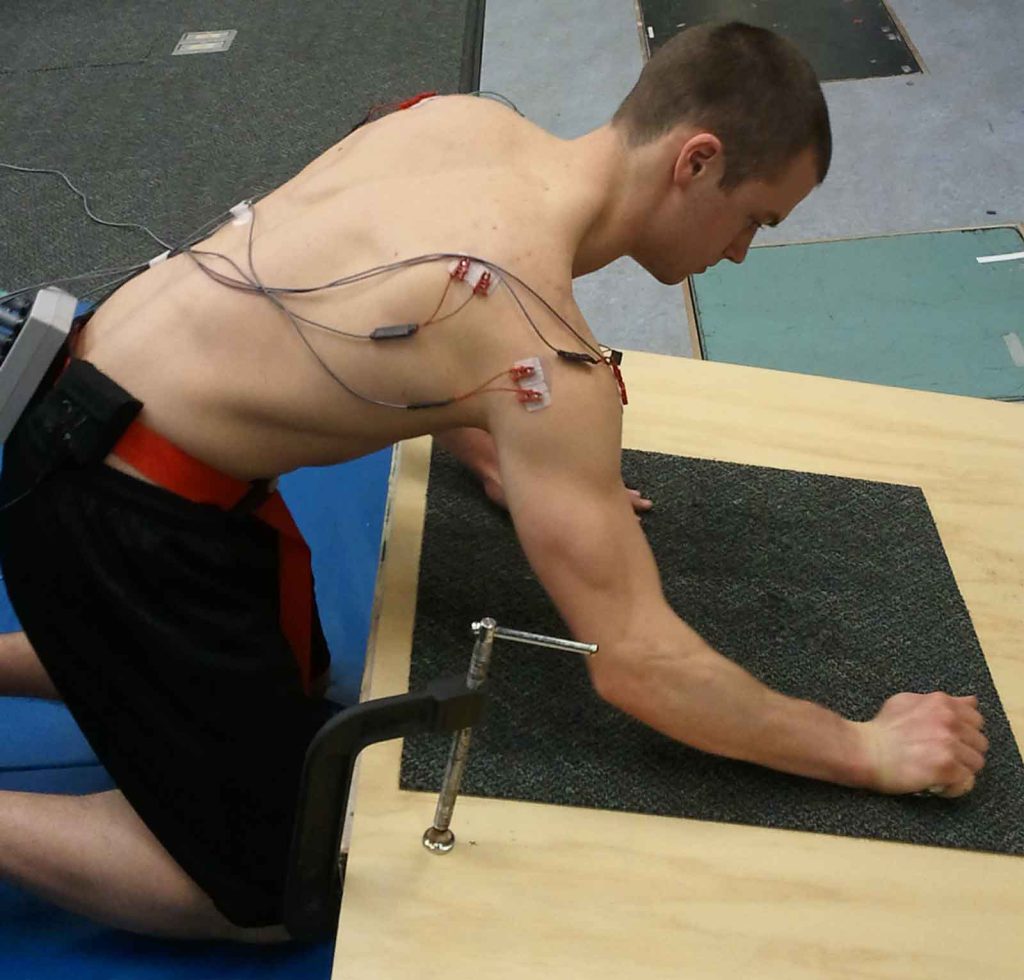The Neanderthal Arm—Hints About Handedness
The human body is often visualized as a symmetrical form: Picture the geometric precision of Leonardo da Vinci’s iconic drawing of a man’s proportions encased by a circle and square. In reality, we are actually quite lopsided. Most people have a dominant ear; the same is true for eyes, feet, and hands. Handedness is perhaps the most obvious of these asymmetries.
From the time most children first start picking up and using objects, they tend to favor one hand over the other. And, in a majority of humans, the right side is dominant: around 85 percent of the modern human population on Earth is right-handed.
Is this a trait that our hominin ancestors also possessed? How long has right-handedness outweighed left-handedness?
Evolutionary anthropologist Natalie Uomini was unaware that she would be tackling these questions when she began her academic career studying the origins of language. Her interest was in the so-called technological hypothesis, which suggests that the origin of hominin language lies in the teaching of stone toolmaking. Uomini started to investigate such tools to see what she might glean about the details of how exactly they were made.
Uomini focused on a collection of Acheulean tools—a technological toolkit that lasted for nearly 1.5 million years and was the primary tool type made by early Neanderthals and their predecessor Homo heidelbergensis. Many of these tools are characterized as hand axes: multiuse, teardrop-shaped tools crafted from a core of flint, chert, or other similar stone.
Uomini tasked expert flint knappers with making replicas of Acheulean tools and Oldowan “choppers,” an even earlier form of stone tool. She found that both right- and left-handed knappers could make a tool for either a right- or left-handed user—so a stone tool could not reveal the handedness of its maker. But, she discovered, it could reveal something about its intended user.
Uomini’s work showed that the way in which a knapper struck the tool with a hammerstone to remove flakes was a good indicator of whether the tool was meant to be used by a right- or left-hander: The toolmaker removed flakes in either a clockwise or counterclockwise direction, depending on the handedness of the person for whom the tool was intended. The tools were also blunted on one side to make them more comfortable to hold by either a right or left hand—much as right- and left-handed scissors have different handle shapes.
Archaeologist Olaf Jöris, a colleague of Uomini’s, applied this research to an assemblage of Neanderthal stone tools from Germany and found that at least 85 percent of those tools were made for right-handers, while some appear to have been modified specifically for left-handers. That work hasn’t been published yet.
This trend is borne out by another line of evidence: skeletal asymmetry. As you (or anyone—even a Neanderthal) use muscles in your body, and as those muscles grow stronger, the parts of the skeleton to which those muscles attach also grows in order to provide more robust anchor points for the increased muscle mass. After death, the skeleton can reveal which parts of the body were stronger, and thus used more intensively, than others.
Neanderthals seem to have had unusually strong right arms based on studies of a number of upper arm bones (humeri) from Neanderthal specimens. We humans typically have a 4–13 percent difference in muscle development between our right and left arms. Neanderthals, on the other hand (pun intended), had up to 50 percent or more muscular asymmetry.
Biological anthropologists have suggested for decades that this development in Neanderthal right-arm muscles was a result of the right-handed use of spears to hunt large game animals. The strength needed for the thrusting or throwing motion capable of killing a bison, horse, or reindeer would certainly be immense.
Another hypothesis, though, suggests that the muscular asymmetry is the result of a much less dangerous task: the arduous scraping of the animal skins that Neanderthals used to keep warm during harsh European winters. Research done in the 1960s found that Neanderthal stone scrapers were mostly used by right-handed individuals.
Whatever the reason, the Neanderthal skeletal record shows that a stark majority (76 percent of 69 Neanderthals studied) were dominant in their right hands. That’s very close to the modern human figure of 85 percent.
How might a prevailing trend of right-handedness have affected Neanderthal day-to-day life? Handedness probably had much the same impacts for them as it has for us today. Instead of right- and left-handed pairs of scissors, Neanderthals had right- and left-handed stone tools. Perhaps Neanderthals also ate with a preferred hand or made gestures with their dominant arm. There are only a few known examples of Neanderthal art, but compellingly, one handprint does exist, on the wall of Maltravieso Cave in Spain. The print was made by dabbing or blowing paint onto the wall around what is demonstrably a left hand. The artist, whoever he or she was, painted right-handed.
This column is part of an ongoing series about the Neanderthal body: a head-to-toe tour. See our overview page.



































